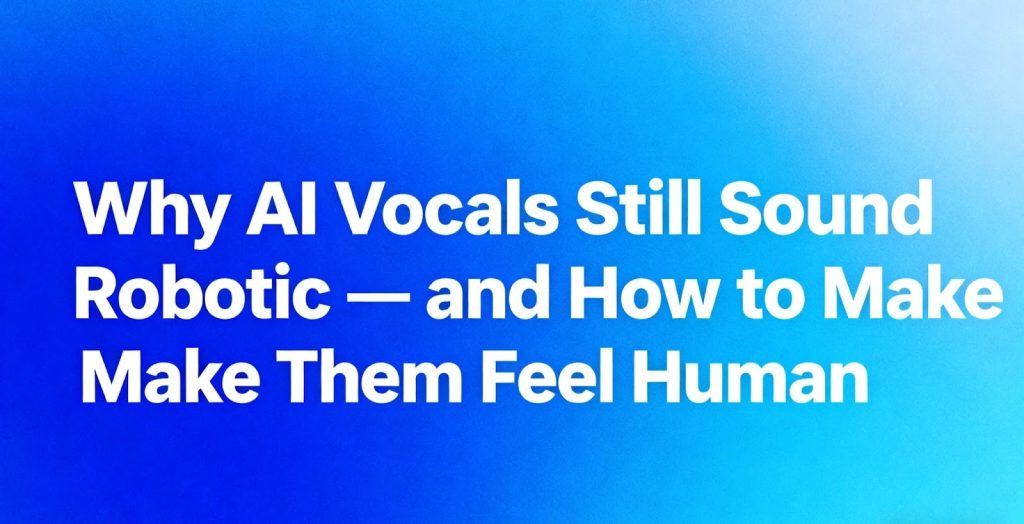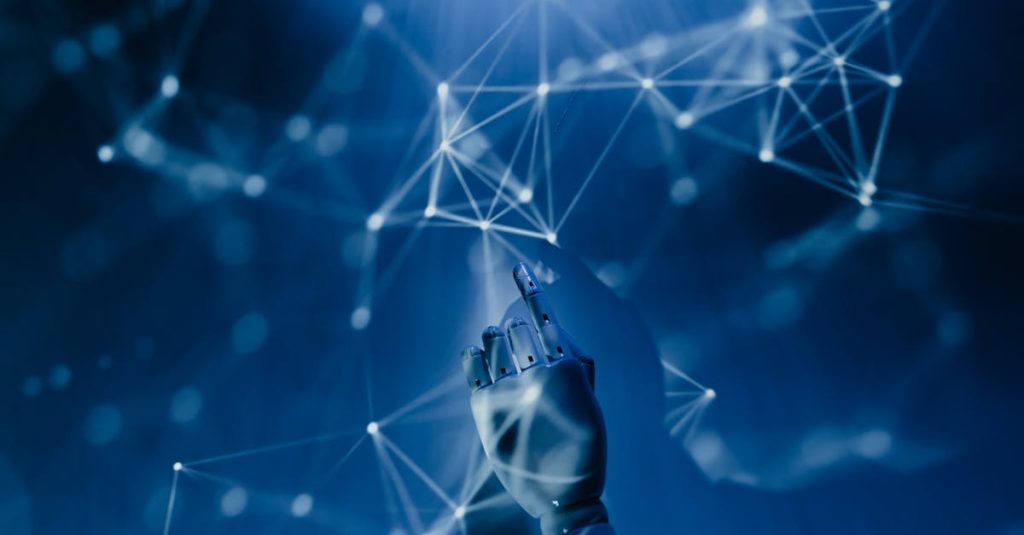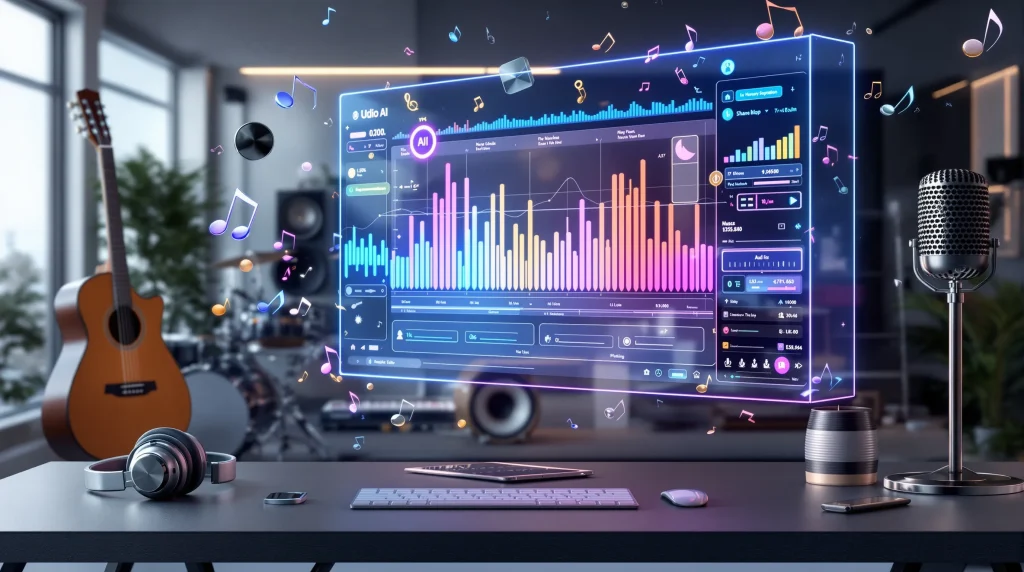人工智慧已經改變了音樂製作,然而人工合成的歌聲往往仍然是單調和機械的。機器人的人工智慧歌聲是由於在複製人類的語調、情感的細微差異以及微妙的時間變化上的差距所造成的。尋求逼真歌聲的音樂家和製作人可以運用技術調整、情感 AI 整合和後期製作工作流程來彌補差距。本文將探討 AI 人聲缺乏自然感的原因,概述人性化合成聲音的成熟技術,探索 Mureka 的 AI 人聲生成功能,調查新興產業趨勢,並強調內容創造者的創意優勢。一路上,讀者會發現先進的神經網路、微時間調整與富表現力的 AI 模型如何結合,製造出類似人聲的聲音,讓每位藝術家都能透過下列工具達到真實的聲樂表現,例如 Mureka 的直覺式 AI 音樂套件.
為什麼 AI 人聲常常聽起來像機器人?了解核心挑戰
神經語音合成器仍在努力處理音高、時間和音色之間的複雜關係,而這些關係正是自然歌聲的定義。這些工具通常會產生平均的節奏和不變的音色,缺乏人類表演者的微妙呼吸模式和微intonations。強化自然的語調需要精確地建模音節重音、動態變化和音節間的停頓 - 早期和許多現有的系統都無法完全模擬。解決這些技術上的缺口,為深入探索情感建模和語音合成方法的演進奠定了基礎。.
是什麼技術差距造成 AI 人聲的機械音效?
由於神經模型優先考量的是可懂度而非表現細節,因此合成歌唱通常會表現出統一的音高和僵化的時間。AI 引擎通常透過串接或預測音訊訊框來產生聲音輸出,這可能會使自然的震動和動態波動變平。常見的缺點包括聲調變換建模不足、諧波控制有限,以及缺乏真正的呼吸。如果每個音符沒有真實的起音和放音行為,結果就像精確但沒有生命力的重現。.
AI 人聲合成的主要技術限制:
- AI Prosody Control 仍然很粗糙,導致語句單調。.
- 動態範圍建模通常會排除歌唱情感中不可或缺的柔和與響亮對比。.
- 音色一致性演算法會忽略聲道變化所產生的有機變化。.
- 微時序解析度受限於以影格為基礎的音訊預測,消除自然時序抖動。.
這些差距強調了加強情緒建模和更深入的神經架構以重現類似人類細微情感的重要性。.
情緒表達的限制如何影響 AI 發聲的自然度?
情感 AI 系統會分析情感並嘗試將感覺映射到聲樂參數上,然而目前許多實作都缺乏細緻的控制。如果沒有詳細的情感標記,人工智能聲樂就無法改變強度、節奏或音調的溫暖度來表示興奮、憂鬱或期待。人類歌手需要仰賴細微的嘶嘶聲、呼吸感以及動態的高潮,這些元素都是真實的象徵。當 AI 忽視這些表達暗示時,輸出的聲音就會讓人覺得矯揉造作、脫離現實。.
彌補情感上的缺點需要嵌入情感分析層,以影響音高調變、節奏彈性和頻譜溫度。下一節將追蹤合成方法的歷史轉變如何為這些先進模型奠定基礎。.
從早期的合成器到深度學習,AI 人聲合成是如何演進的?
早期的電子發聲器使用以規則為基礎的音型合成,可提供清晰但單調的輸出。其後基於樣本的方法改善了音色的多樣性,但保留了機械時序。深度學習的出現引進了能夠學習語音中時間依存性的循環和變換器架構。目前的神經文字轉語音模型利用大量語音資料集和注意力機制來產生更流暢的詞組。然而,即使是這些複雜的網路,也需要明確調整語調和情感層,以符合人類的表達能力。.
研究證明,神經網路可以在合成歌唱中達到高度的自然性和表現力。.
用於表現歌唱聲合成的神經網路
在本作品中,我們提出了一種基於神經網路的歌唱合成器,它可以產生具有高度自然性和表現性的合成歌唱。該系統在大量的歌唱旋律和歌詞資料集上進行訓練,能夠產生與人聲無異的歌唱聲音。.
隨著演算法從簡單的振盪器進展到精密的生成模型,類似人類發聲逼真度的潛力也在擴大,為有針對性的人性化技術鋪路。.
AI 歌唱語音合成領域已取得重大進展,其中深度神經網路和機器學習在其演進過程中扮演重要角色。.
AI 歌唱語音合成:深度神經網路與機器學習
本章先概述人工智慧,然後探討目前機器學習對歌唱聲合成 (SVS) 的影響。對人工智能領域歷史和範圍的討論涵蓋了關鍵的技術區別,例如預測式人工智能與生成式人工智能,以及監督式演算法與非監督式演算法。本章還介紹了深度神經網路 (DNN)、自然語言處理 (NLP) 和大型語言模型 (LLM),同時觸及基礎模型和轉換器架構的作用和意義。本章比較不同的歌唱語音合成系統如何進行 AI 訓練。介紹了幾個基於 DNN 的 SVS 系統,包括 VOCALOID:AI,於 2019 年與 AI Hibari 一起展示,並於 2022 年以 Vocaloid 6 與 Vocalo Changer(人聲音色轉換工具)一起發售。透過 2018 年至 2022 年間來自東亞的案例研究,檢視圍繞語音克隆的疑慮。接著檢視美國與歐洲的深層偽造問題,重點研究 Holly Herndon 的 Holly+ 與 Spawning,並與 Grimes 的 Elf.tech 作比較。本章對目前的歌聲合成產品進行了簡短的調查。本章最後考慮如何處理人工智慧在歌唱合成中的倫理問題。.
如何讓 AI 聲音聽起來更人性化?人聲自然的成熟技術
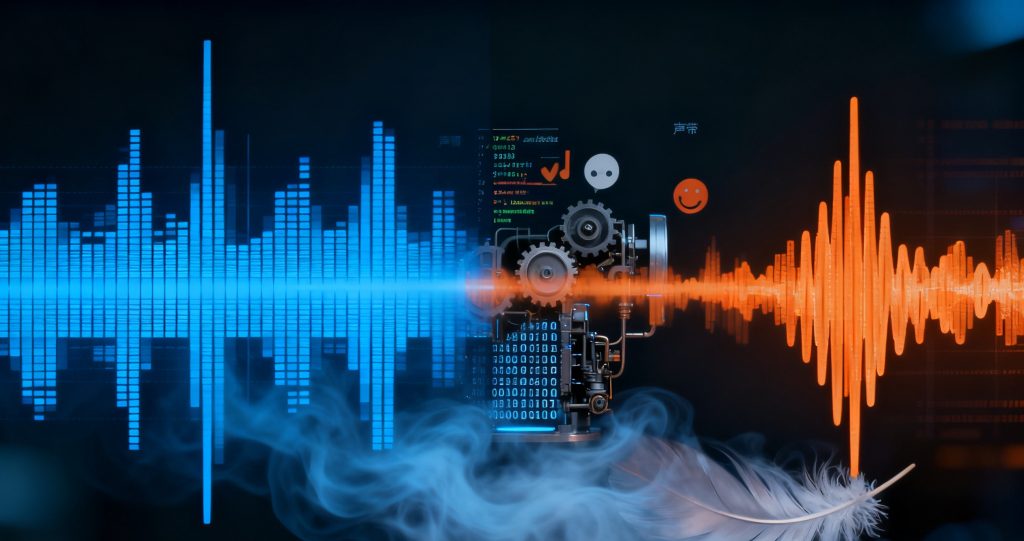
合成人聲的人性化涉及多個階段的調整:在合成過程中微調音高和時間、嵌入情感標記,以及應用後製處理。整合微小的時間變化、微妙的颤音和動態呼吸提示,會直接影響感知的真實性。在輸出音訊之前,情感 AI 層可實現情感驅動的人聲轉變。最後,混音工具(如均衡和混響)可模擬自然的共鳴和深度。結合這些技術可產生真實的歌聲,引起聽眾的共鳴。.
音高校正和微時差在人工智能人性化發聲中扮演什麼角色?
精準的音高與時間調整,可將原本僵硬的 AI 輸出重塑為流暢、富表現力的表演。微調微小的音高偏差可模擬自然的揉弦和歌手的音調。同樣地,以毫秒為單位移動音符的起始點和偏移量,也可引入真實的時間波動。這些控制提供了細微分句和旋律強調的機制。.
| 發聲特性 | 機器人輸出 | 類人輸出 |
|---|---|---|
| 俯仰穩定度 | 所有音符的準確調音 | 多變的音高彎曲與揉弦深度 |
| 定時均勻性 | 剛性節拍對齊的起始點和偏移點 | 輕微超前或緊貼拍子的移動 |
| 動態對比 | 各短語音量一致 | 高潮和低潮 |
引入微時鐘和音高調變,將靜態的 AI 人聲轉變為以表演為導向、富有情感的演繹。.
情感 AI 語音技術如何增強聲樂表達能力?
Emotional AI 語音系統可偵測情感,並將情感設定檔套用至聲音參數,藉由調變音調、節奏和強度來加強表現力。透過在歌詞中標記情感提示(例如喜悅、悲傷或緊急感),人工智能引擎可調整音譜亮度、發聲速度和和聲強度。這種方法可為合成人聲注入與歌詞內容一致的感覺。藝術家可以指定情感轉換,讓 AI 聲音在高潮時提升,或在反省時減弱。融入情感的 AI 可直接解決造成機器人感知缺乏細微差異的問題。.
將情感表達融入人工智慧語音合成是一個重要的研究領域,目前已開發出可產生各種情感語調語音的系統。.
以情感表達推動人工智能語音合成
在本文中,我們提出了一個多聲道情感文字轉語音合成系統,可以產生具有情感表達力的語音。我們的系統能夠產生多聲道的語音,並能選擇從快樂到悲傷的情感語調。.
哪些後期處理方法可改善 AI 人聲的逼真度?
後期製作透過仿效錄音室對人類歌手所使用的技術,改善 AI 人聲。等化可雕塑頻率平衡,強調臨場感與溫暖度。壓縮可控制動態峰值,確保靈魂般的一致性,而不會使自然的瞬間變平。迴響與延遲引入空間共鳴,模擬能傳達深度的室內聲學。層疊微妙的失真或磁帶飽和度可重現有機音效中不可或缺的類比瑕疵。.
必要的後期處理技巧:
- 在 100 Hz 左右使用柔和的低切濾波器來消除隆隆聲。.
- 使用中等攻擊壓縮以維持吸氣與呼氣的動態。.
- 加入短衰減的板式混響,營造自然的人聲氛圍。.
- 疊加微妙的和聲激發來模仿微妙的喉部共鳴。.
哪種人聲效果最能模擬呼吸感和動態範圍?
透過受控的雜訊注入和振幅調變,展現出呼吸感和動態範圍。溫和的噪音閘門自動引入真實的吸氣假象,同時平行壓縮保留瞬間峰值。動態濾波器掃描可重現細微的口型變化。.
- 使用呼吸儀器外掛程式,隨機插入吸氣和呼氣樣本。.
- 以 4:1 的比例採用平行壓縮,混合壓縮與乾訊號。.
- 自動進行頻帶通濾波器掃描,以模仿聲道的心音變換。.
- 在較高頻率上引入輕微的諧波失真,以增加溫度。.
製作人員透過將這些效果分層,重現人類的呼吸週期和音調起伏,這對於真實的歌唱是不可或缺的。.
是什麼讓 Mureka 的 AI 發聲器在創造類人聲方面獨樹一幟?

Mureka 的 AI Vocal Generator 結合先進的神經架構、使用者驅動的情感標記以及直覺的編輯介面,因而脫穎而出。該平台的深度序列到序列模型 (sequence-to-sequence models) 可捕捉精細的前音細節,而其情感 AI 層則可進行精確的情感控制。. 穆雷卡 將聲音生成與樂器製作和後期處理工具統一,在單一套件中實現無縫的人性化工作流程。.
Mureka 如何使用先進的神經網路來實現自然的 AI 聲音?
Mureka 利用卷積與變換器混合網路,同時分析語音上下文、音高輪廓和情感標記。此架構內含前奏預測層,可產生微妙的時間與動態變化。該系統從不同的歌唱風格中學習,以產生有質感的音色和逼真的揉弦模式。Mureka 結合了自回歸推理與平行波形合成,可同時確保表達深度與快速呈現--這對於真實的類人聲樂而言是非常重要的平衡。.
使用者如何利用 Mureka 的編輯器微調 AI 聲音的表達力?
內 Mureka 的編輯, 使用者可透過圖形封套和滑桿調整音高曲線、時間偏移和情感標籤。使用者可繪製自訂的揉弦形狀、自動調整動態範圍,以及按一下即可將和聲部分分層。即時預覽可進行迭代改進,而內建的分析功能可顯示頻譜圖,突顯需要加強音調的區域。這些互動式的控制功能,讓創作人有如錄音室編輯般細膩的表達力。.
有哪些成功案例展示了 Mureka 類似人類的 AI 聲音?
獨立音樂人和內容創造者表示,他們可以使用 Mureka 的 AI 發聲器. .一個合作專案製作了一張多國語言的單曲,在現場樂器的伴奏下,AI 和聲表現豐富,因其真實的人聲特性而大受好評。另一位業餘作曲家則使用 Mureka 來產生具有自然呼吸提示和情感澎湃的伴唱,並指出該平台的易用性和逼真效果改變了小型錄音室製作的遊戲模式。.
逼真 AI 語音技術的新趨勢與未來展望為何?
下一個人工智慧聲樂時代將整合多模態情境、道德框架,以及藝術家與人工智慧更緊密的合作。生成式對抗性網路將精緻化頻譜細節,而強化學習模型則根據聽眾的回饋調整風格。情感 AI 將延伸至微動態偵測,產生反映複雜人類情感的聲音。產業應用持續激增,重塑音樂、遊戲與多媒體的工作流程。.
深度學習和生成模型如何推進 AI 聲音逼真度?
最新的變壓器變種嵌入了具有元學習功能的大型語音庫,可從數秒鐘的輸入音訊中快速克隆語音。生成式敵意網路可區別自然與合成的細微差異,進而提升波形的真實性,並改善和聲複雜度與呼吸模擬。對未標記的聲音錄音進行自我監督學習,發現新的前音模式,豐富人工智能驅動的聲音表達。.
AI 語音生成中有哪些重要的道德考量?
道德框架必須處理原創歌手的語音所有權、同意權與公平報酬。透明的資料來源和選擇性授權可保護其錄音可訓練 AI 模型的歌手。明確的歸屬指引可確保合成人聲能歸功於基礎配音演員或樣本。開發人員應該實施保障措施,防止未經授權的語音複製,並鼓勵在創意產業中負責任地使用。.
Mureka 如何塑造類人 AI 音樂製作的未來?
Mureka 的路線圖 包括人工智能協作會議,讓音樂家與虛擬歌手即時互動,並隨時調整情感和風格。該平台正在改進消除偏見的演算法,並擴大許可聲音庫,以支援道德創作。透過將專業級聲樂工具的使用民主化,Mureka 讓各階層的創作者都能探索以下領域的新領域 AI 驅動的音樂.
關於克服機器人 AI 語音,使用者常問哪些問題?
創作者在處理機械式 AI 輸出時,經常會尋求清晰的語調、情感整合和工具比較。瞭解為何某些方面仍具有挑戰性,以及現代平台如何解決這些問題,可以引導您做出更好的決策,達到更自然的效果。.
為什麼 AI 人聲缺乏自然的音調和節奏?
AI 人聲通常預設為平均音高輪廓和量化時間,以確保各樂句的清晰度。如果沒有明確的音高轉換和搖擺感建模,結果就會讓人感到節拍。加入與抒情重點相關的微調變化和重音模式,可回復自然的音調和節奏流暢。.
如何在 AI 歌聲中加入情感提示?
情緒提示是透過對文字加上情緒標籤,以驅動音調範圍、節奏和頻譜亮度的調變。先進的系統可將喜悅映射為較高的音高變化和較尖銳的攻擊,而悲傷則會觸發較慢的節奏和較暗的音調色彩。將這些標籤視覺化的編輯器,可以精確地在聲線中安排情感轉換。.
哪些 AI 語音產生器能提供最真實的聲音表現?
在目前的解決方案中,結合深度語法網路、情感 AI 層級與互動式編輯器的平台可提供最真實的效果。Mureka 的 AI Vocal Generator 將這些功能與無縫的音樂創作環境結合,讓使用者不需要豐富的專業技術,就能創造出逼真的歌聲,因而脫穎而出。.
音樂家和內容創造者如何從類人的 AI 聲音中獲益?
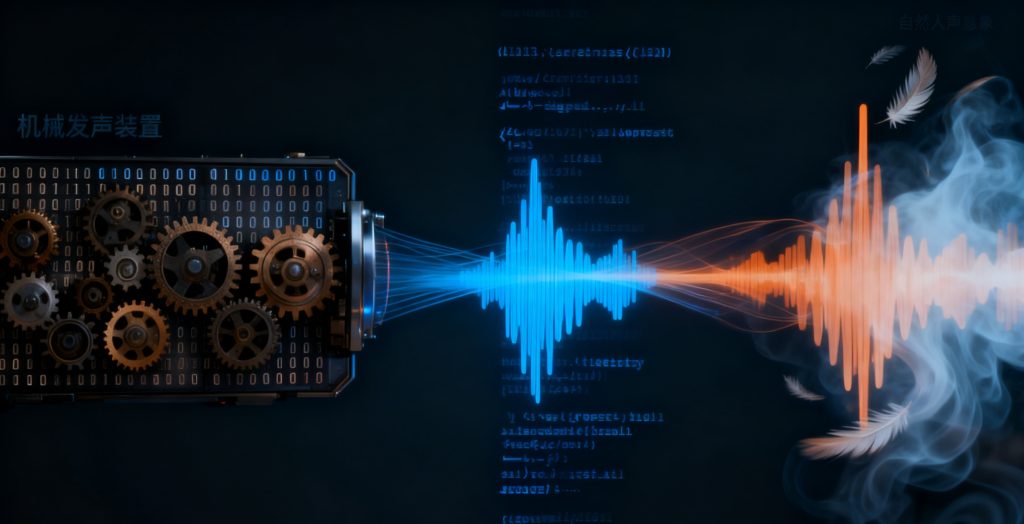
類似人聲的 AI 聲音可釋放全新的創意工作流程、簡化製作過程,並擴大音樂的可能性。藝術家可以即時建立聲樂想法的原型、探索和聲編曲,並克服錄音室使用權或歌手可用性等障礙。逼真的合成聲音還能降低製作成本,加速多媒體專案的迭代週期。.
逼真的 AI 聲音釋放了什麼樣的創意可能性?
表情豐富的 AI 聲音可讓您即時修改歌詞、翻唱多國語言歌曲,以及進行不同風格的合作。製作人無需聘請多位歌手,即可嘗試合唱團的質感、人聲層次和另類人聲風格。這種自由度促進了概念專輯、身歷其境音訊體驗和互動媒體自適配樂的創新。.
Mureka 如何簡化初學者和專業人士的 AI 發聲創作?
Mureka 的平台 提供情緒、風格和類型的導覽預設,以及進階使用者的實作控制。直覺的拖放式歌詞編輯、情感標籤和即時渲染預覽,將學習曲線降至最低。初學者可快速達到完美的效果,而專業人士則可利用深度編輯選項來量身打造歌聲表演。.
AI 人聲如何影響音樂類型和製作成本?
AI 聲音透過人聲製作的民主化,正在重塑流行音樂、電子音樂和電影音樂。新進的藝術家可以用最少的開銷製作完整的曲目,減少錄音室和臨時歌手的支出。成熟的製作人將 AI 層次整合到他們的編曲中,以增強現場人聲,推動新的混合類型和整個產業的成本效益工作流程。.
將人工合成的歌聲人性化,將機器人的輸出轉換為能引起聽眾共鳴的情感表演。透過結合技術調整 (例如微調音、音高調變與等化器)、情感化的 AI 整合與先進神經模型,創造者可獲得逼真的歌聲。Mureka 的 AI Vocal Generator 藉由直覺的編輯工具與專為自然表達力所設計的深度學習架構,簡化了這個過程。隨著 AI 發聲技術的持續演進,被賦予權力的音樂家和內容創造者將享有前所未有的創作自由和製作效率。.

